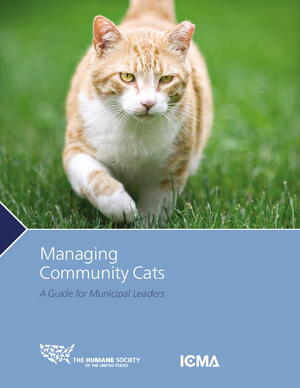
Few animal-related issues facing local leaders are potentially more difficult and time-consuming than those involving un-owned cats in the community. Complaints or concerns regarding cats often represent a disproportionate share of animal-related calls to elected officials and local animal care and control agencies.
“Community cats” are typically un-owned or semi-owned cats, comprised of both strays (lost and abandoned former pets who may be suitable for home environments) and ferals (extremely fearful of people and not welcoming of human attention, making them unsuitable for home environments), who are the offspring of other feral or stray cats. Some community cats can be considered loosely owned, meaning that concerned residents feed them and may provide some form of shelter in their own homes or on their own property, but do not always identify the cats as their own personal pets.
This guide examines the role of community cats (sometimes called free-roaming cats) in cat overpopulation and the concerns shared by officials, animal care and control agencies, and constituents about these animals. It provides recommendations for strategies to manage community cat populations.
This guide can assist municipal leaders in evaluating the presence of cats in their communities and determining how to address these populations effectively.
